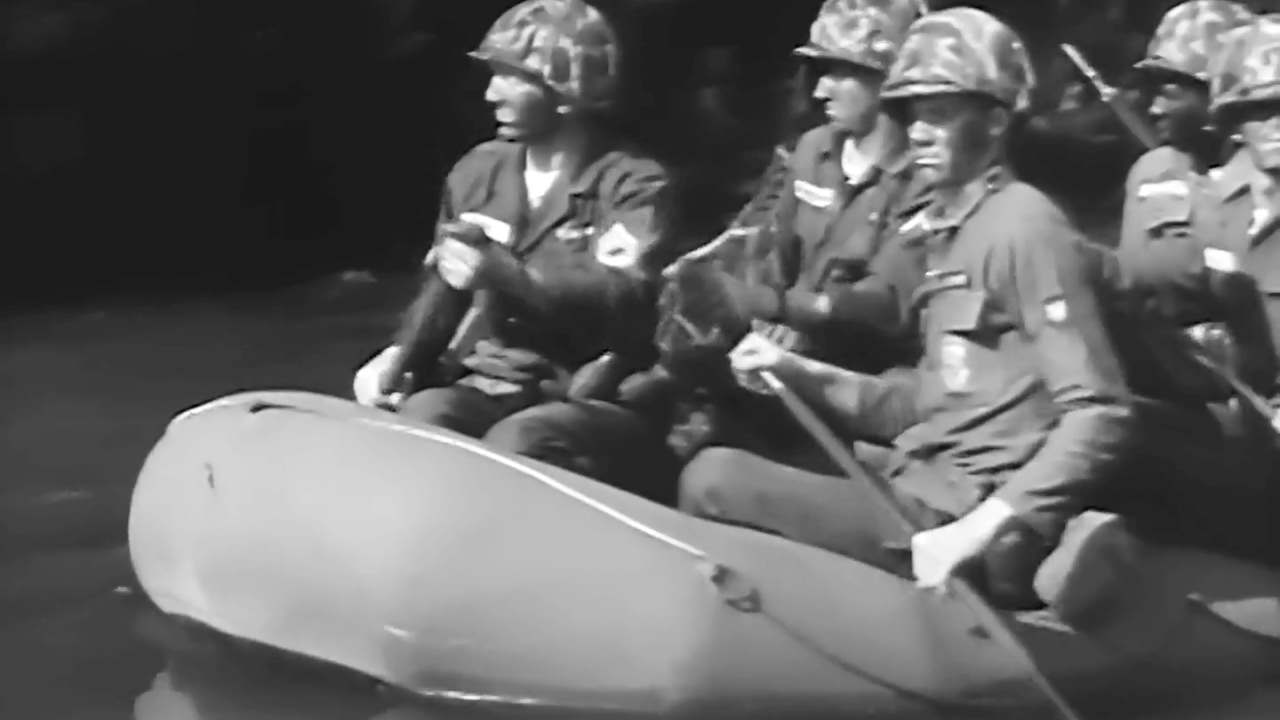The Big Picture TV Series playlist:
more at:
‘ “Where is the enemy? What is he doing? How can we prevent it?” THE BIG PICTURE presents “The Patrol,” the dramatic and exciting report of seven men sent deep into aggressor-held territory for the answers to these questions. Upon their skill, training, and fortitude can rest the outcome of an entire maneuver. As THE BIG PICTURE points out, thirty years ago such an assignment would have been accomplished by a lightening sortie of mounted men galloping headlong behind enemy lines, sowing confusion and, with luck, returning with the vital information. Today’s cavalryman may not seem as glamorous but is certainly more reliable. In the course of their mission the patrol takes advantage of every form of transportation from helicopter to armored patrol car, to rubber raft, to combat boots. This is not a war “game.” It has the serious purpose of giving Army units field experience in the doctrines they have studied in training. In wartime, such a mission could well result in the prevention of thousands of casualties.
.’
“The Big Picture” episode TV-427
Public domain film from the US National Archives, slightly cropped to remove uneven edges, with the aspect ratio corrected, and one-pass brightness-contrast-color correction & mild video noise reduction applied.
The soundtrack was also processed with volume normalization, noise reduction, clipping reduction, and/or equalization (the resulting sound, though not perfect, is far less noisy than the original).
The Cavalry Scout is a job title and a reconnaissance specialist in the United States Army. Cavalry Scouts work to obtain, distribute, and share vital combat and battlefield information on the enemy and on combat circumstances and environmental conditions. The role originated with the United States Cavalry. The Cavalry Scout is also known as the “eyes and ears” of the Army.
The Cavalry Scout is the commander’s eyes and ears on the battlefield. When information about the enemy is needed, they call on the Scouts. Cavalry Scouts gather information by dismounted and/or mounted reconnaissance patrols. They are responsible for reconnaissance and they utilize various weapons to include explosives and mines. Cavalry Scouts engage the enemy with anti-armor weapons and scout vehicles in the field, track and report enemy movement and activities, and will direct the employment of various weapon systems onto the enemy. The job of a Cavalry Scout is to operate as one of the first personnel in an area, provide forward reconnaissance and spotting for the U.S. Army, and find and relay key information about the enemy to commanders and leaders in the field. Their duties include assisting with observation and listening posts, gathering reconnaissance information, performing and helping with navigation, and helping secure and transport ammunition. The Cavalry Scout leads, serves, or assists as a member of scout crew, squad, section, or platoon in reconnaissance, security, and other combat operations…
Cavalry Scouts wear the ACU, or Army Combat Uniform. The standard camouflage pattern issued is the UCP (Universal Camouflage Pattern), or in certain theatres (specifically soldiers going to, or coming from Afghanistan), the OCP (OEF) Camouflage Pattern, commonly referred to as Multicam. Two unique articles, the stetson hat as well as spurs, can be worn during special events or when directed by the chain of command. Cavalry Scouts are permitted to wear the Cavalry Stetson Hat with the Dress Uniforms during formal unit functions….
Training and School information
All Cavalry Scouts attend OSUT (One Station Unit Training) at Fort Benning in Georgia. The first phase, roughly 9 weeks, is basic military training. The second phase, roughly 7 weeks long, focuses on becoming a Scout for a total of 16 weeks. During these final weeks the future Cavalry men are trained by Instructors as well as their Drill Sergeants.
The OSUT training was moved from Fort Knox, Kentucky, to Fort Benning, Georgia, in 2011.
Training is broken into color-coded phases, during which recruits gain increasing freedom, based on the recommendations of their drill instructors. Training requires good physical and mental condition, and is mostly hands on, in the field.

